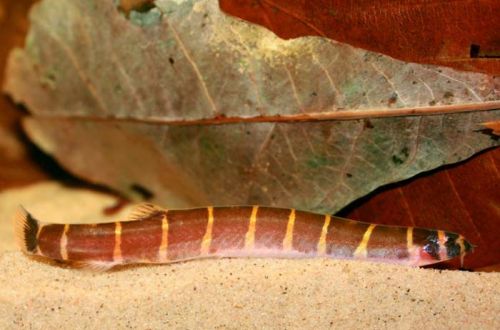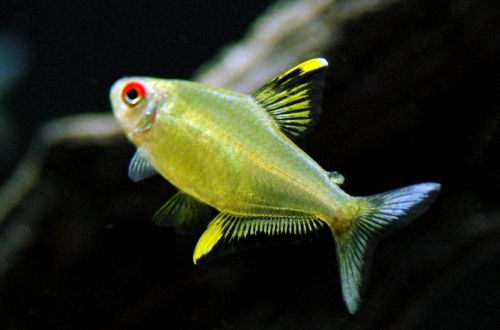
Acanthophthalmus Myersa
Myers’ acanthophthalmus, scientific name Pangio myersi, belongs to the Cobitidae (Loach) family. The fish is named after Dr. George Sprague Myers of Stanford University for his contribution to the study of the fish fauna of the river systems of Southeast Asia.

Contents
Habitat
They originate in Southeast Asia. The natural habitat extends to the vast expanses of the lower basin of the Maeklong River in what is now Thailand, Vietnam, Cambodia and Laos.
Inhabits swampy water bodies with a slow current, such as forest streams, peat bogs, backwaters of rivers. It lives in the bottom layer among thickets of plants and numerous snags, among flooded coastal vegetation.
Description
Adults reach a length of about 10 cm. With its elongated, wriggling body shape, the fish resembles an eel. The color is dark with a pattern of a dozen orange symmetrically arranged stripes. The fins are short, the tail is dark. The mouth has two pairs of antennae.
Outwardly, it resembles closely related species, such as Acanthophthalmus Kühl and Acanthophthalmus semigirdled, so they are often confused. For the aquarist, confusion does not have serious consequences, since the features of the content are identical.
Behavior and Compatibility
Peaceful friendly fish, get along well with relatives and other non-aggressive species of comparable size. It goes well with miniature Rasboras, small livebearers, zebrafish, pygmy gouras and other representatives of the fauna of the rivers and swamps of Southeast Asia.
Acanthophthalmus Myers needs the company of relatives, so it is recommended to purchase a group of 4-5 individuals. They are nocturnal, hiding in shelters during the daytime.
Caution should be taken when choosing species from among catfish, cichlids, and other charrs, some of which may exhibit hostile territorial behavior.
Brief information:
- The volume of the aquarium – from 60 liters.
- Temperature – 24-30°C
- Value pH — 5.5–7.0
- Water hardness – soft (1-10 dGH)
- Substrate type – any
- Lighting – subdued
- Brackish water – no
- Water movement – light or moderate
- The size of the fish is up to 10 cm.
- Nutrition – any drowning
- Temperament – peaceful
- Keeping in a group of 4-5 individuals
Maintenance and care, arrangement of the aquarium
For a group of 4-5 individuals, the optimal size of the aquarium starts from 60 liters. The design should provide for places for shelters (driftwood, thickets of plants), where the fish will hide during the day. Another mandatory attribute is the substrate. It is necessary to provide soft, fine-grained soil (sandy) so that the fish can partially dig into it.
The content is quite simple if the values of hydrochemical parameters correspond to the norm, and the degree of pollution with organic waste is at a low level.
Aquarium maintenance is standard. At a minimum, it is necessary to replace part of the water with fresh water weekly, which is convenient to combine with cleaning the soil, and carry out preventive maintenance of equipment.
Food
In nature, it feeds on small zoo- and phytoplankton, which it finds at the bottom by sifting portions of soil with its mouth. In an artificial environment, popular sinking foods (flakes, granules) can become the basis of the diet. Feed in the evening before turning off the light.





